Mulch pathways offer homeowners an affordable, versatile solution for creating beautiful garden walkways that blend seamlessly with natural landscapes. These organic passages provide practical benefits including excellent drainage, natural weed suppression, and soil enrichment as materials decompose over time. From simple wood chip trails to elaborate themed designs incorporating stepping stones and decorative borders, mulch pathways can transform any outdoor space into an inviting garden sanctuary. With proper installation using landscape fabric and appropriate edging materials, these pathways require minimal maintenance while offering endless creative possibilities for garden enthusiasts seeking both functionality and aesthetic appeal.

1. Classic Wood Chip Pathway with Natural Stone Edging

A traditional wood chip pathway bordered by irregular natural stones creates a timeless garden walkway that complements any landscape style. This design uses locally sourced hardwood chips spread three to four inches deep over landscape fabric, providing excellent weed control and moisture retention. Natural fieldstone or river rocks form an organic border that prevents chip migration while adding textural interest. The pathway works beautifully through flower beds, connecting different garden areas with rustic charm. Annual replenishment of wood chips maintains the fresh appearance while decomposing material enriches surrounding soil. This approach suits cottage gardens, woodland settings, and traditional landscape designs perfectly.
2. Shredded Bark Mulch Trail with Brick Border Definition

Shredded bark mulch creates a refined pathway appearance when contained within classic brick borders that add formal structure to garden walkways. This design employs finely shredded hardwood or cypress bark that provides a smooth walking surface while maintaining natural aesthetics. Traditional red clay bricks or neutral-toned pavers form clean lines that prevent mulch spillage onto adjacent lawn areas. The pathway demonstrates excellent durability in high-traffic zones while requiring minimal maintenance beyond occasional bark replenishment. Installation involves digging shallow trenches for brick placement and adding weed barrier fabric before mulch application. This combination works especially well in formal gardens, herb plots, and structured landscape designs.
3. Pine Needle Pathway with Log Roll Borders

Pine needles create a soft, aromatic pathway that transforms garden walks into forest-inspired experiences enhanced by natural log roll edging. This sustainable approach utilizes fallen pine needles that provide excellent drainage while releasing pleasant resinous fragrances with each footstep. Half-log borders made from cedar or pressure-treated lumber contain the needles while adding rustic visual appeal. The pathway works particularly well in acidic soil gardens where pine needle decomposition benefits acid-loving plants like azaleas and blueberries. Regular needle collection and replenishment maintain pathway integrity throughout seasons. This design complements woodland gardens, coniferous landscapes, and naturalistic garden styles while providing sustainable waste utilization for pine debris.
4. Colored Rubber Mulch Geometric Pattern Design
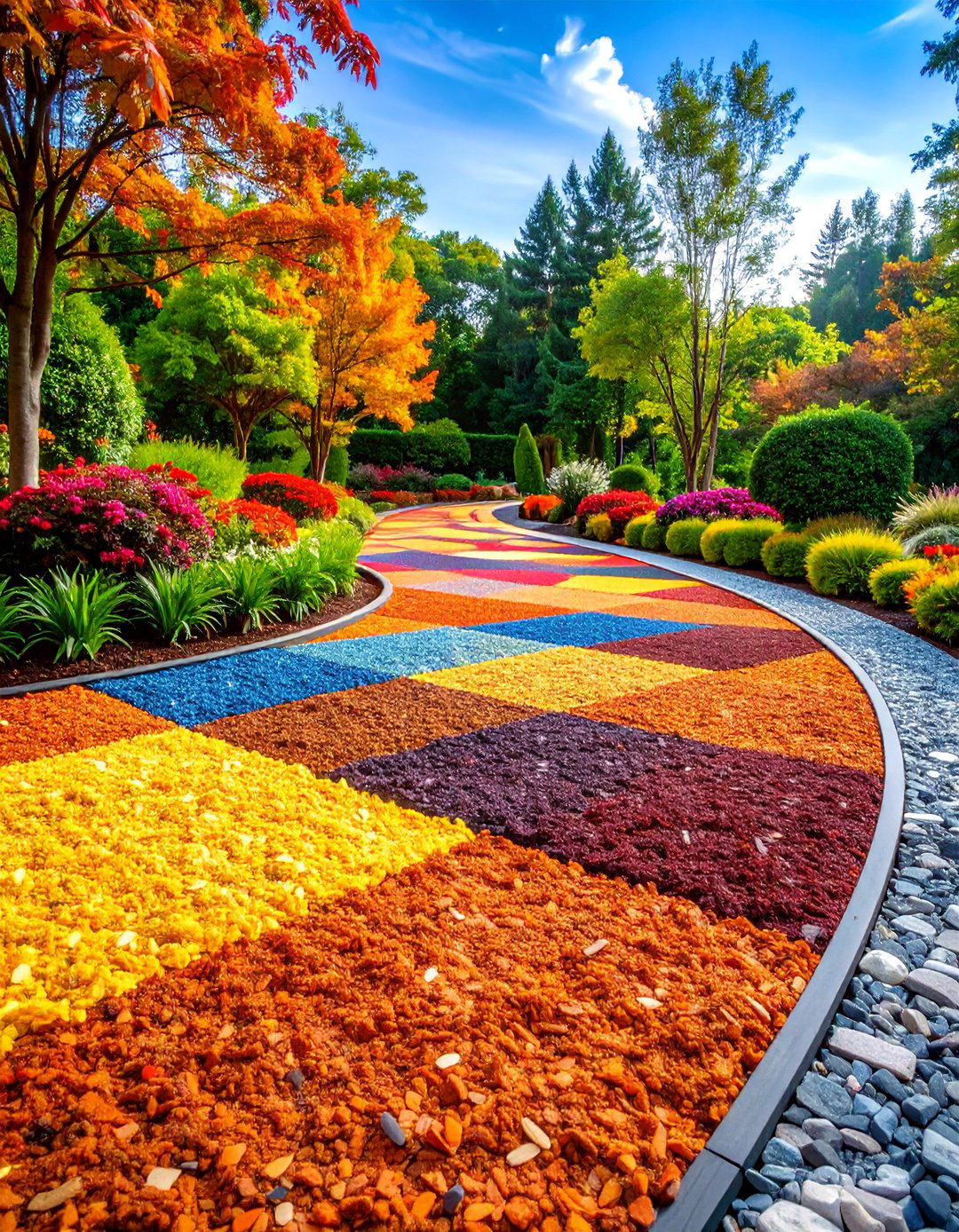
Colored rubber mulch enables creative geometric pathway designs that add vibrant visual interest while providing long-lasting, weather-resistant walking surfaces. This innovative approach uses recycled tire rubber in various colors to create patterns like checkerboards, stripes, or flowing curves that enhance modern landscape aesthetics. The rubber material requires no annual replacement, maintains color vibrancy, and provides excellent drainage without supporting weed growth. Metal or plastic edging contains different colored sections while maintaining pattern integrity. Installation involves careful planning and sectioning to achieve desired geometric effects. This contemporary design works perfectly in modern gardens, children's play areas, and artistic landscape installations where creative expression combines with practical pathway solutions.
5. Cocoa Shell Mulch Pathway with Limestone Accent Strips

Cocoa shell mulch creates a rich, chocolate-colored pathway that releases subtle cocoa aromas while limestone accent strips add elegant contrast and structural definition. This luxurious design employs hulls from cocoa bean processing that provide natural pest deterrent properties alongside beautiful reddish-brown coloration. Linear limestone strips or stepping stones interrupt the cocoa mulch surface, creating visual rhythm while offering stable footing during wet conditions. The pathway requires replacement every two years as cocoa shells decompose relatively quickly, enriching soil with organic matter. This design particularly suits herb gardens, vegetable plots, and gourmet garden settings where aromatic qualities enhance the overall sensory garden experience.
6. Cypress Mulch Walkway with Solar Light Integration

Cypress mulch pathways enhanced with integrated solar lighting create enchanting evening garden experiences while providing practical illumination for safe navigation. This design utilizes naturally pest-resistant cypress chips that maintain golden-brown coloration longer than other organic mulches. Solar-powered stake lights, bollards, or string lighting systems embed within or alongside the mulch surface, charging during daylight hours and automatically illuminating pathways after dark. The cypress material provides excellent moisture retention and natural insect repellent properties. Strategic light placement every three to four feet ensures adequate illumination while creating magical ambiance for evening garden enjoyment. This combination works beautifully in entertaining areas, meditation gardens, and romantic landscape settings.
7. Mixed Bark Chip Pathway with Decorative Metal Edging

A sophisticated mixed bark chip pathway featuring decorative metal edging creates clean, contemporary lines that complement modern landscape designs while maintaining natural walking surfaces. This approach combines different bark textures and colors in sections or random distribution, creating visual interest through natural variation. Powder-coated aluminum or steel edging provides durable containment with sleek profiles that won't detract from planted areas. The mixed bark approach utilizes available materials while creating unique pathway character that changes with seasonal weather and decomposition. Installation requires careful attention to edging alignment and proper depth for long-term stability. This design works exceptionally well in contemporary gardens, minimalist landscapes, and architectural outdoor spaces.
8. Straw Mulch Pathway with Wooden Post Markers
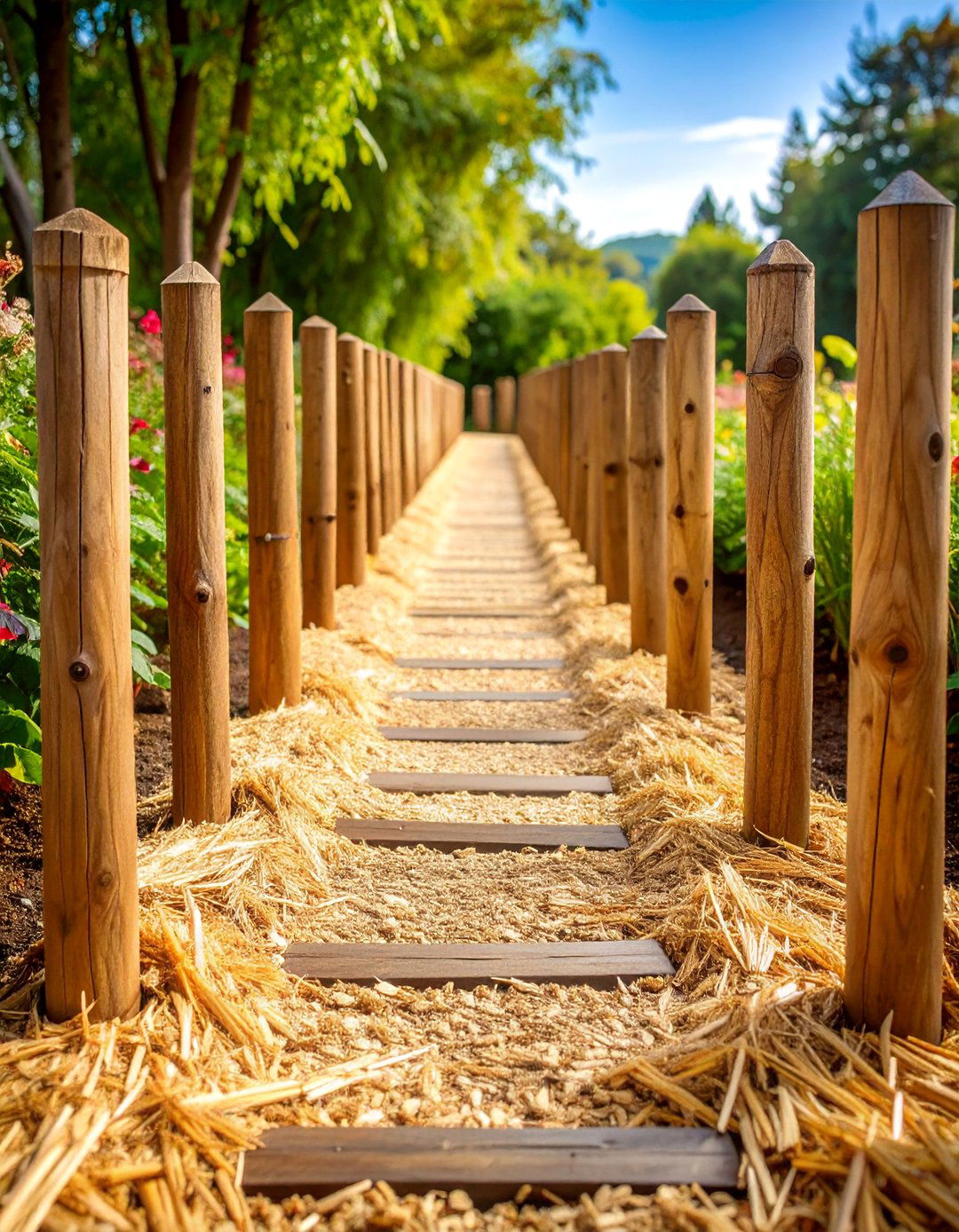
Straw mulch creates temporary seasonal pathways perfect for vegetable gardens while wooden post markers provide clear direction and rustic charm throughout growing seasons. This practical design employs wheat, rice, or barley straw that decomposes quickly, adding organic matter to garden soil while suppressing weeds effectively. Wooden posts or stakes mark pathway edges and important garden intersections, offering places to hang tools or seasonal decorations. The straw material provides excellent insulation for plant roots while allowing easy pathway modification as garden layouts change. Annual straw replacement coincides with garden preparation cycles, making this approach both economical and environmentally sustainable for productive garden spaces.
9. Hardwood Mulch Trail with Stepping Stone Accents
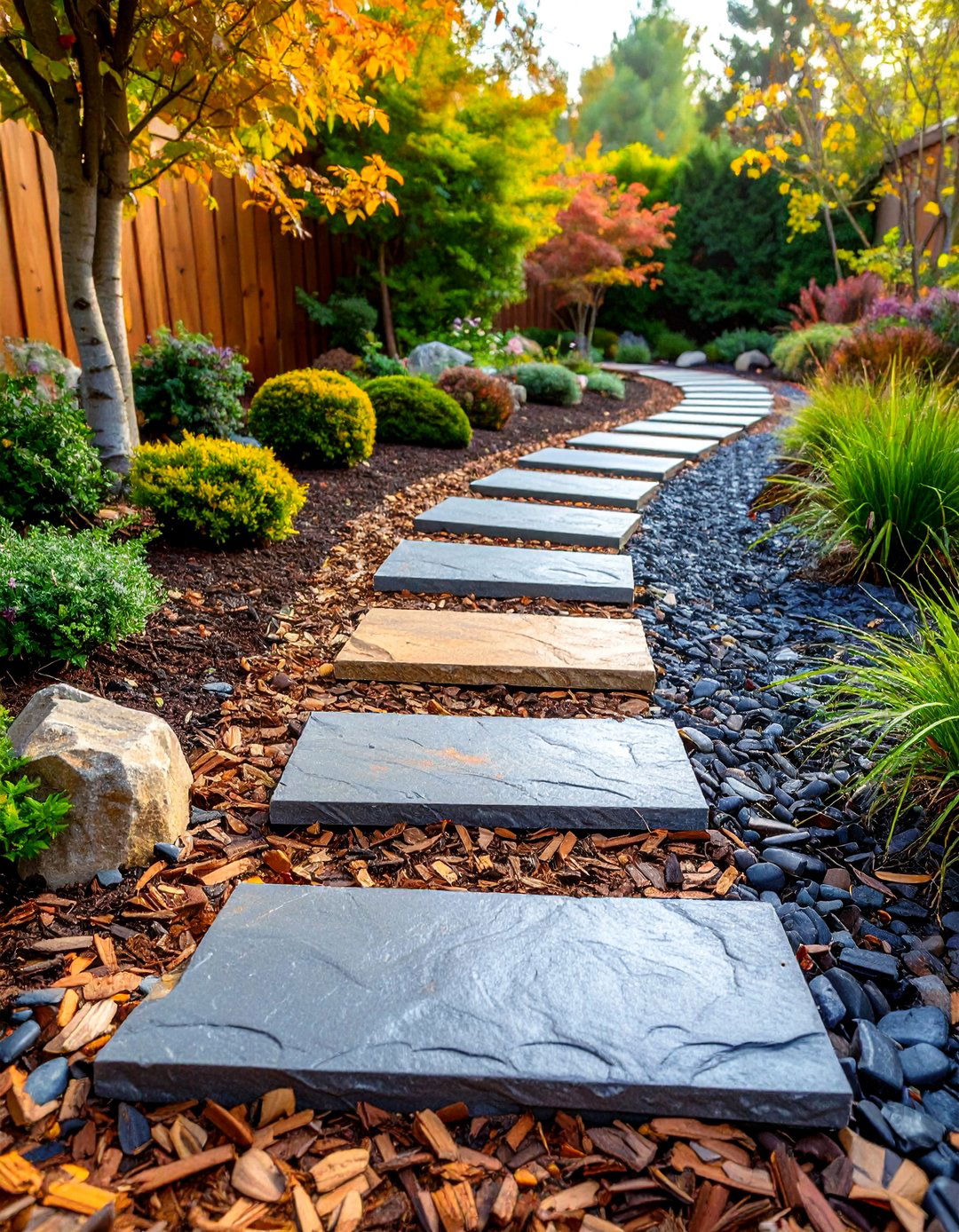
Hardwood mulch combined with strategically placed stepping stones creates a practical pathway that accommodates both casual strolling and purposeful garden navigation. This versatile design uses dark hardwood chips that provide excellent moisture retention while natural stone or concrete stepping stones offer stable footing during wet conditions. Stone placement follows natural walking patterns, spacing approximately eighteen to twenty-four inches apart for comfortable strides. The combination reduces overall stone requirements while maintaining pathway functionality through all weather conditions. Regular mulch refreshing around stones prevents weed growth while decomposing material improves soil structure. This approach works well in transition areas between formal and informal garden zones.
10. Shredded Leaf Mulch Pathway with Plant Border Integration
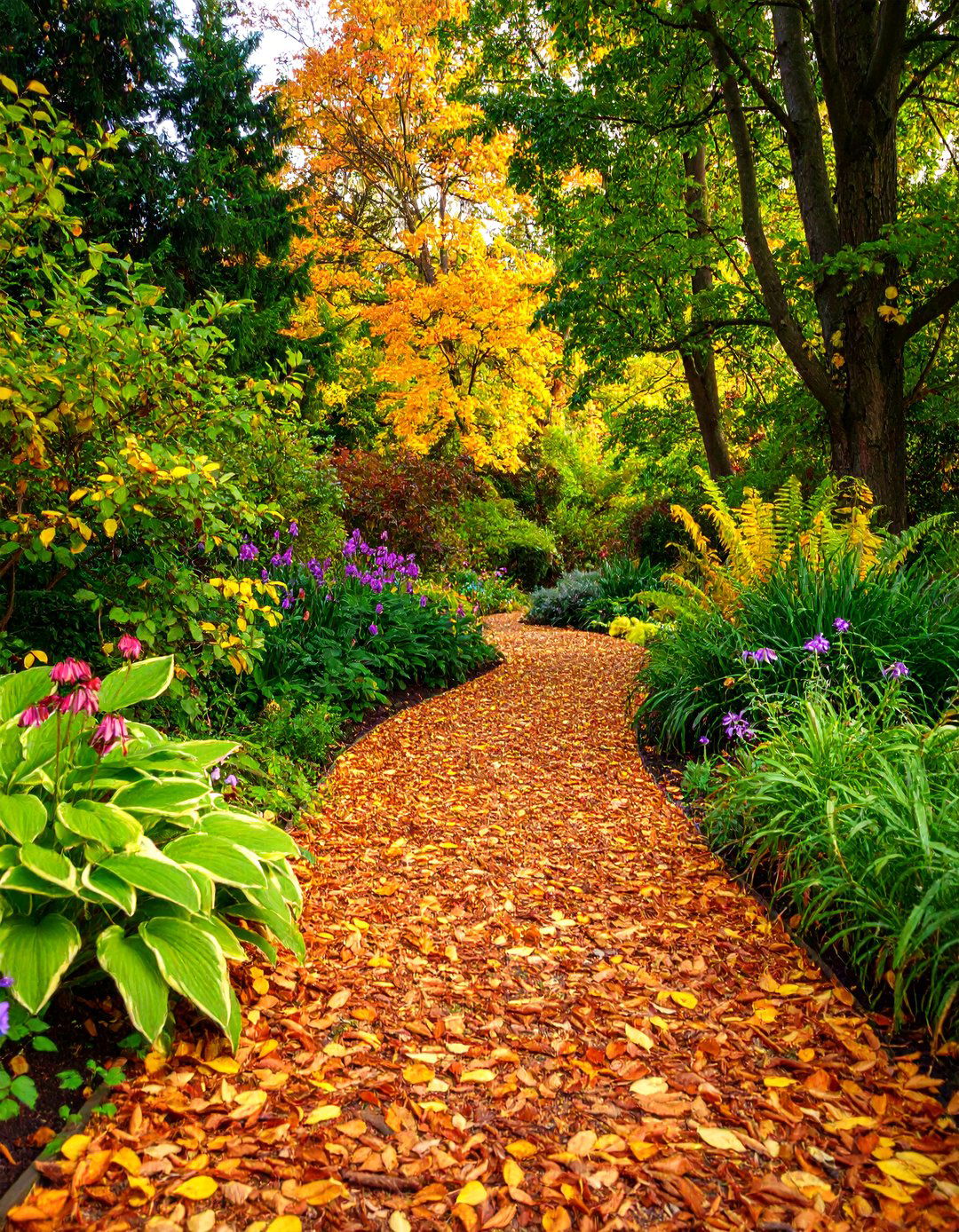
Shredded leaf mulch pathways bordered by living plant edges create dynamic, seasonal walkways that change character throughout the year while providing habitat for beneficial garden creatures. This sustainable design utilizes collected autumn leaves processed through shredders or mowers to create fine-textured walking surfaces. Low-growing perennial plants like hostas, ferns, or ornamental grasses form natural borders that soften pathway edges while providing seasonal color and texture changes. The leaf mulch decomposes rapidly, requiring annual replenishment but significantly improving soil fertility. This approach supports garden ecosystem health while creating beautiful, naturalistic pathways that integrate seamlessly with planted landscape areas and woodland garden styles.
11. Cedar Chip Pathway with Rock Garden Side Plantings
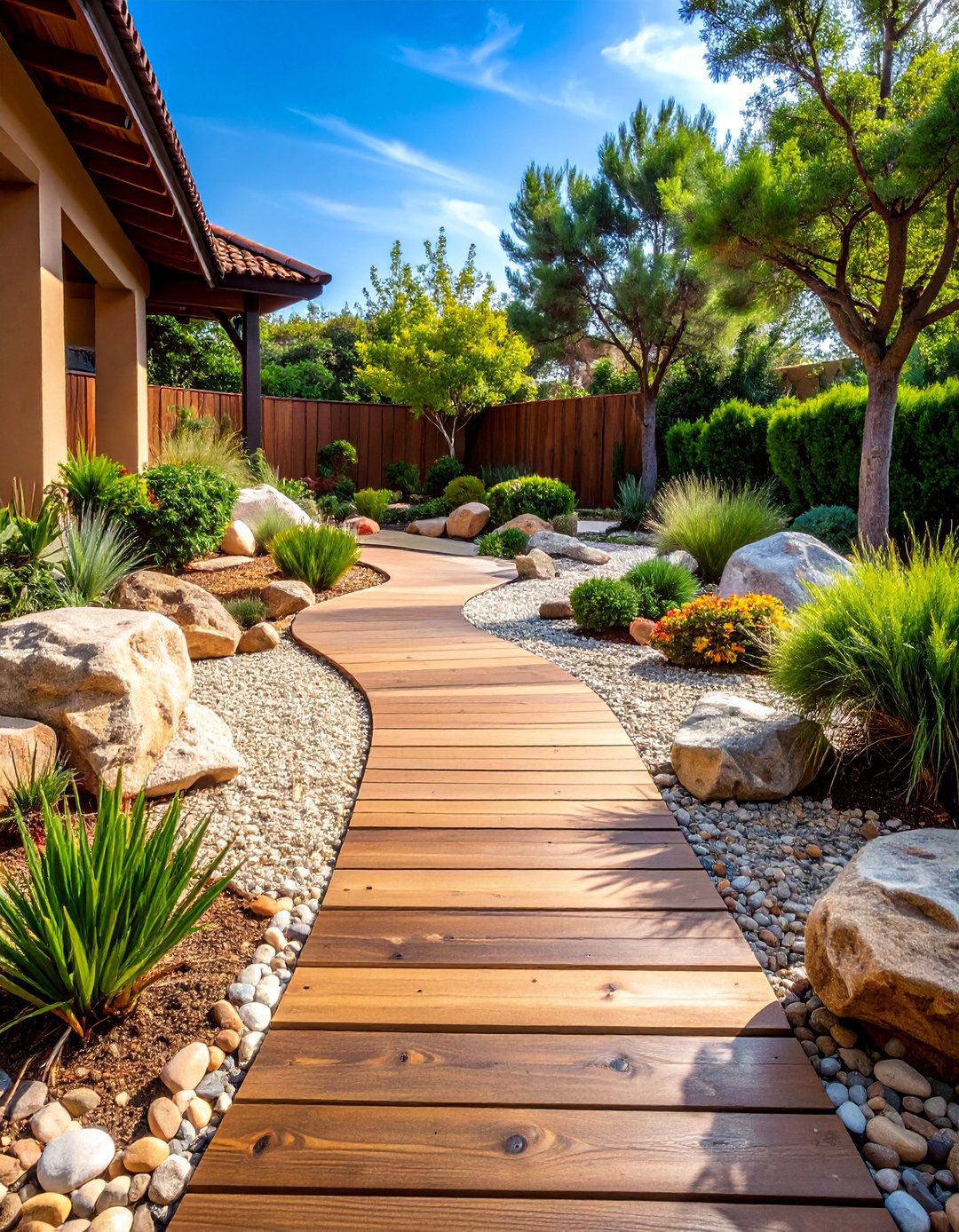
Cedar chips create naturally pest-resistant pathways enhanced by rock garden plantings that add vertical interest and Mediterranean charm to garden walkways. This design employs aromatic cedar materials that maintain color and structure longer than other wood products while naturally repelling insects and small pests. Carefully placed stones and boulders alongside the pathway support drought-tolerant plants like sedums, lavender, or ornamental grasses that thrive in well-drained conditions. The cedar material provides excellent drainage while the rock features create microclimates for diverse plant communities. This combination works particularly well in dry gardens, Mediterranean-style landscapes, and areas where water conservation is important while maintaining attractive, functional pathway systems.
12. Rubber Mulch Pathway with Mosaic Stepping Stone Features
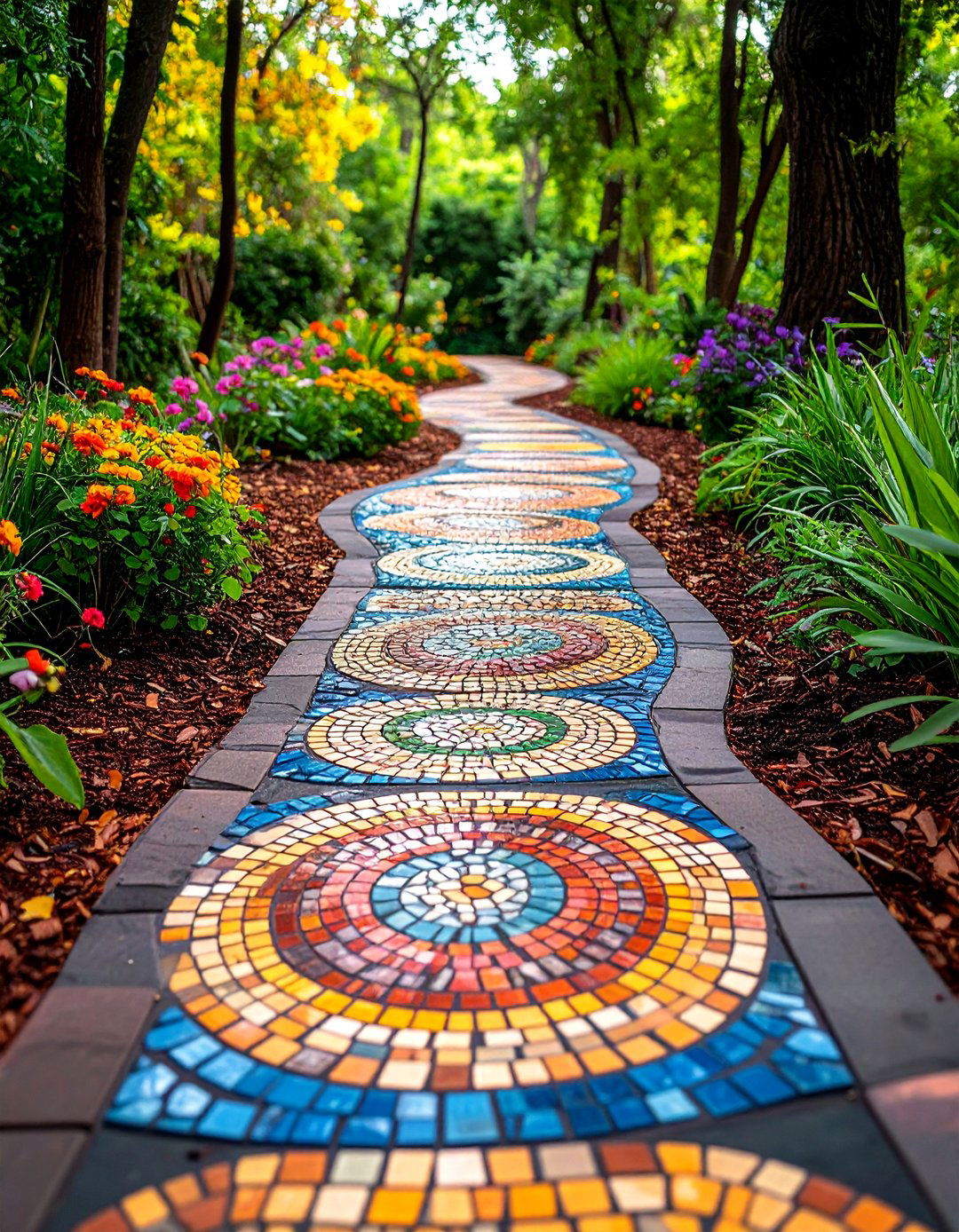
Recycled rubber mulch pathways featuring embedded mosaic stepping stones combine sustainability with artistic expression while providing long-lasting, low-maintenance walking surfaces. This creative design uses colored rubber mulch as a neutral base that showcases handcrafted or purchased mosaic stones as focal points throughout the pathway length. The rubber material never requires replacement and provides excellent cushioning for foot traffic while the mosaic elements add personal artistic touches. Installation involves careful planning for stone placement and proper excavation to ensure level surfaces. This approach works wonderfully in artistic gardens, children's areas, and outdoor spaces where creative expression combines with practical pathway needs while supporting environmental sustainability through recycled material usage.
13. Mulch Pathway with Raised Planter Box Borders

Elevated planter boxes filled with colorful flowers or herbs create striking borders for central mulch pathways while maximizing growing space in compact garden areas. This design employs wood, stone, or composite materials to construct raised borders that contain both pathway mulch and border plantings at different levels. The mulch area provides comfortable walking surfaces while raised planters offer improved drainage and soil conditions for plants requiring specific growing requirements. Seasonal planting changes in border boxes create evolving pathway character throughout growing seasons. This approach works excellently in small gardens, urban spaces, and areas where soil conditions are challenging while providing accessible growing opportunities for gardeners with mobility considerations.
14. Pine Bark Nugget Pathway with Curved Design Flow
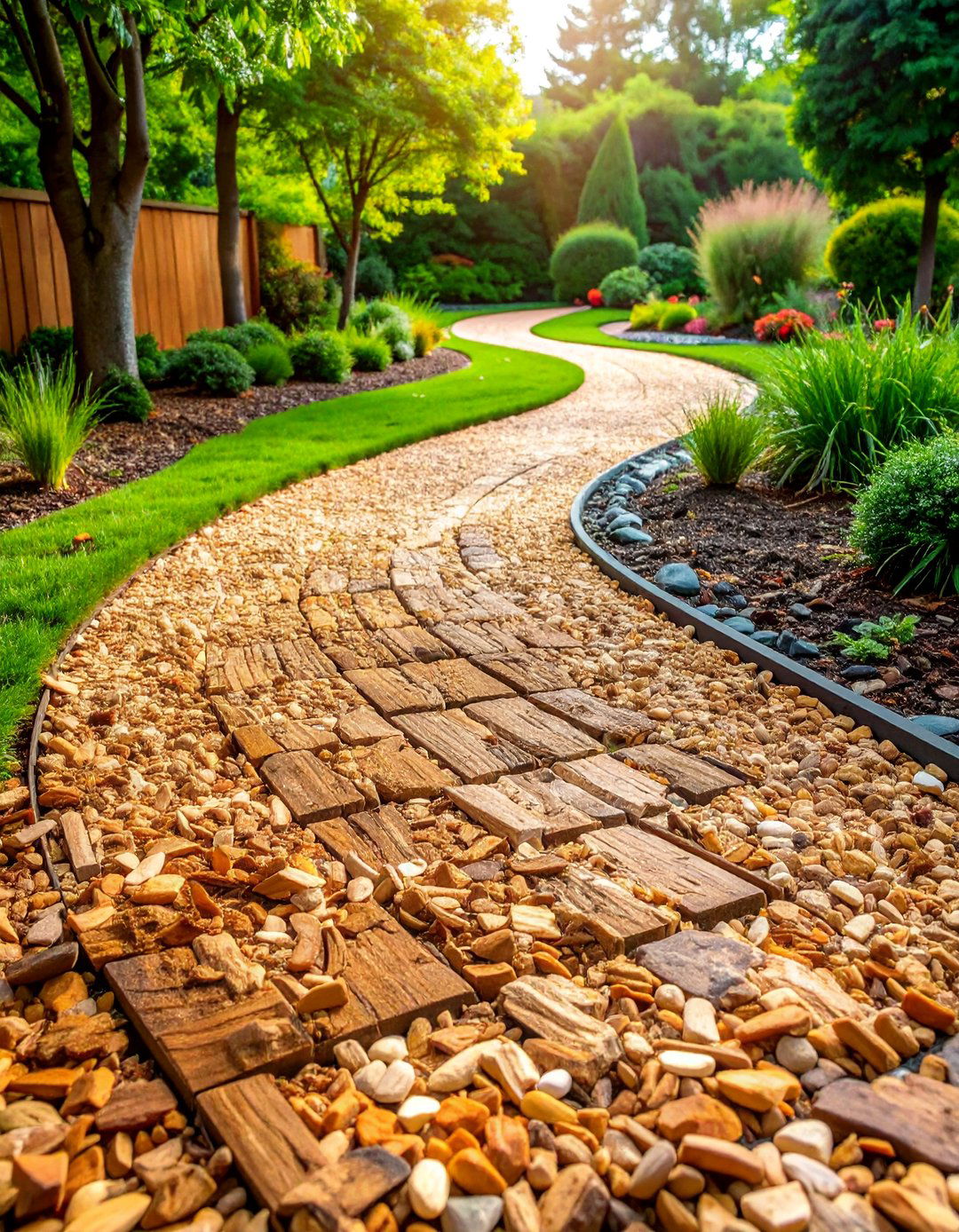
Large pine bark nuggets create distinctive chunky-textured pathways that follow gentle curves through garden spaces while providing excellent drainage and long-lasting ground cover. This design employs graded bark pieces sized between two and four inches that maintain structure longer than smaller mulch materials. Curved pathway layouts create more interesting garden navigation while making spaces appear larger than straight-line approaches. The larger nugget size requires less frequent replacement while providing excellent weed suppression and moisture retention. Flexible edging materials accommodate curved designs while maintaining defined pathway boundaries. This approach suits informal gardens, naturalistic landscapes, and areas where low-maintenance ground cover combines with attractive pathway functionality through diverse garden zones.
15. Organic Compost Mulch Pathway with Herb Border Plantings

Well-aged compost mulch creates nutrient-rich pathways bordered by culinary herbs that provide aromatic experiences while supplying fresh seasonings for kitchen use. This productive design employs finished compost materials that provide stable walking surfaces while gradually releasing nutrients to surrounding plants. Herb plantings like rosemary, thyme, oregano, or lavender form fragrant borders that release pleasant scents when brushed against during pathway use. The compost base supports excellent plant growth while providing good drainage and soil structure. Regular addition of fresh compost maintains pathway integrity while supporting vigorous herb production. This combination works perfectly in kitchen gardens, culinary landscapes, and areas where functional beauty combines with practical food production.
16. Shredded Rubber Pathway with Decorative Concrete Borders
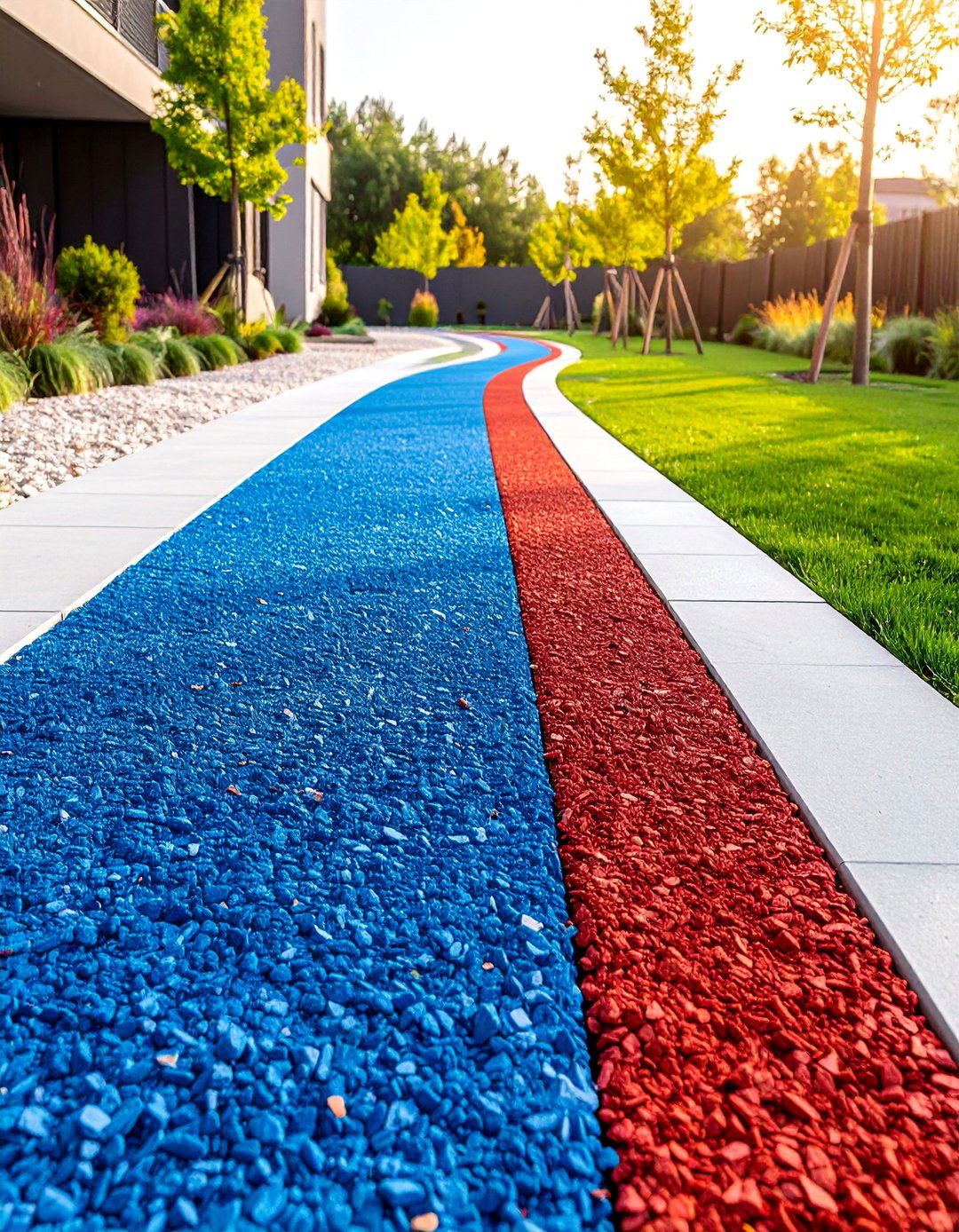
Recycled shredded rubber pathways contained within decorative concrete borders create durable, professional-looking walkways that require minimal maintenance while providing excellent weather resistance. This contemporary design uses finely shredded tire rubber that maintains consistent appearance year-round without fading or decomposing. Stamped, colored, or textured concrete borders add sophisticated finishing touches while providing permanent pathway definition. The rubber material provides excellent cushioning and drainage while the concrete borders ensure long-term structural integrity. Installation requires careful concrete work but results in pathways that can last decades with minimal upkeep. This approach works well in modern gardens, commercial landscapes, and areas where professional appearance combines with environmental responsibility through recycled material usage.
17. Wood Shaving Pathway with Wildflower Meadow Edges

Fine wood shavings create soft, natural pathways that meander through wildflower meadow plantings while supporting native plant communities and beneficial wildlife habitats. This ecological design employs kiln-dried wood shavings that provide stable walking surfaces without introducing weed seeds or pests to garden areas. Native wildflower plantings along pathway edges create seasonal color displays while supporting pollinator populations and local ecosystem health. The wood shaving material decomposes slowly while improving soil structure and supporting beneficial microorganism communities. This approach works beautifully in naturalistic gardens, wildlife habitats, and large landscape areas where pathway functionality combines with environmental stewardship and native plant conservation efforts.
18. Coconut Coir Pathway with Tropical Plant Companions
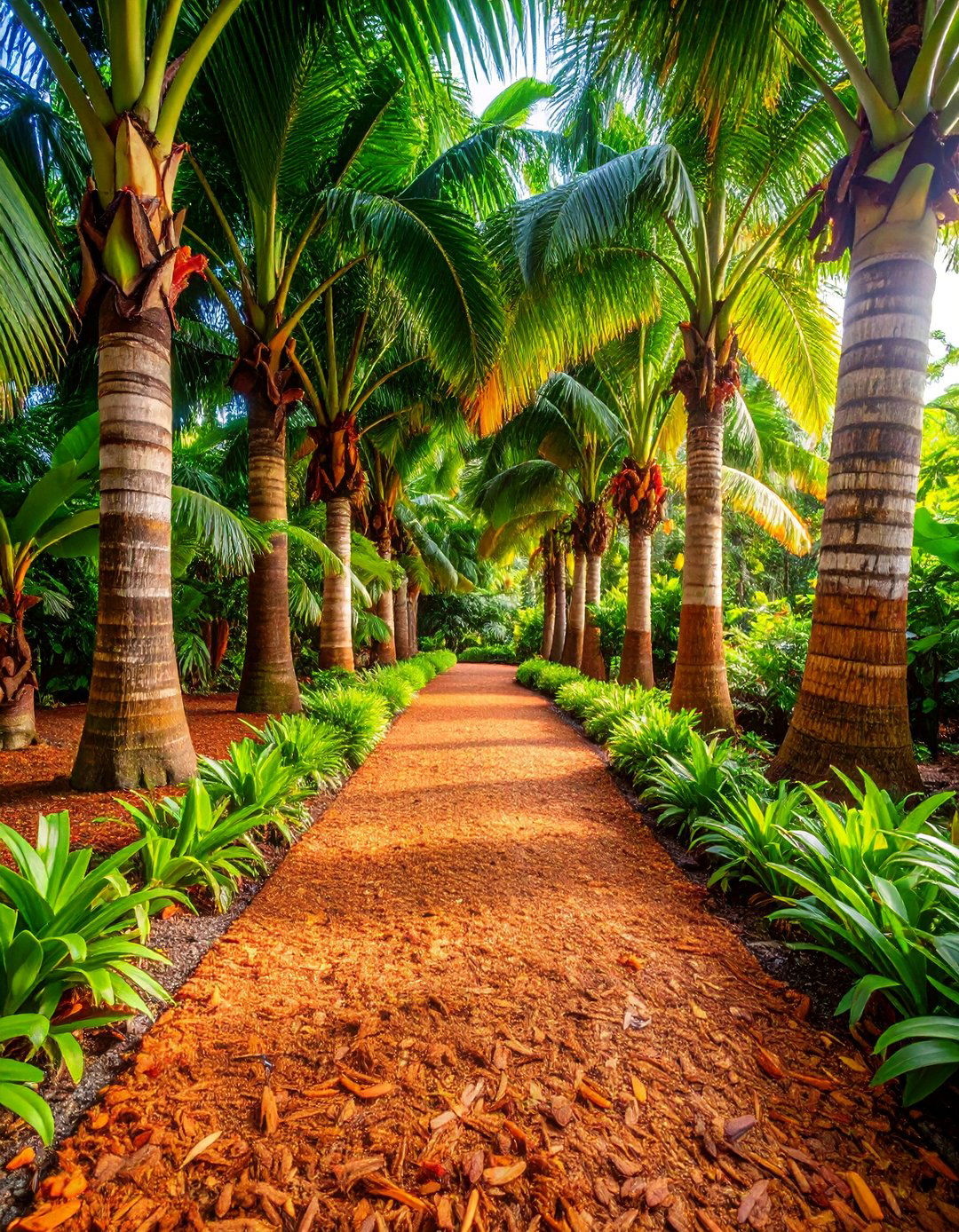
Coconut coir fiber creates exotic-textured pathways that complement tropical and subtropical plant collections while providing excellent drainage and organic soil enhancement. This specialized design employs processed coconut husk fibers that maintain fibrous texture while slowly decomposing to improve soil structure. Tropical plants like palms, bromeliads, or colorful foliage plants create lush border plantings that thrive in the well-drained conditions coir provides. The material requires periodic replacement but adds significant organic matter to soil while maintaining attractive appearance. This approach works excellently in warm-climate gardens, greenhouse pathways, and indoor conservatory settings where tropical aesthetics combine with practical walking surface needs while supporting specialized plant collections.
19. Recycled Paper Mulch Pathway with Ornamental Grass Borders
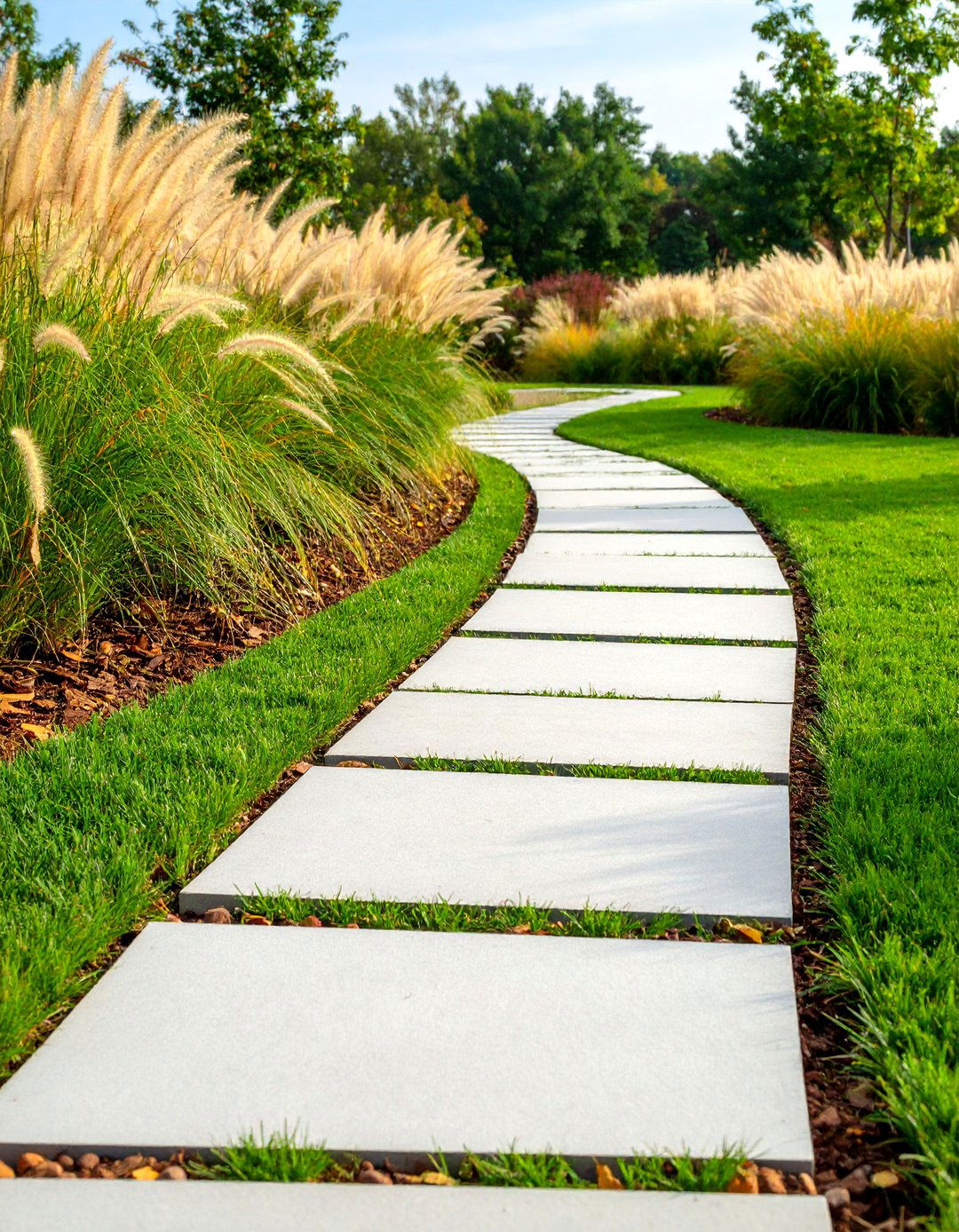
Recycled paper mulch creates environmentally responsible pathways while ornamental grass borders add movement and seasonal interest throughout the garden year. This sustainable design employs processed recycled paper materials that provide excellent weed suppression while decomposing completely without environmental impact. Ornamental grasses like fountain grass, maiden grass, or blue fescue create dynamic border plantings that change with seasons and weather conditions. The paper mulch requires annual replacement but significantly improves soil organic content while the grass borders provide wildlife habitat and winter interest. This combination works well in contemporary gardens, sustainable landscapes, and areas where environmental responsibility combines with beautiful, functional garden design elements.
20. Hemlock Bark Pathway with Fern Garden Integration
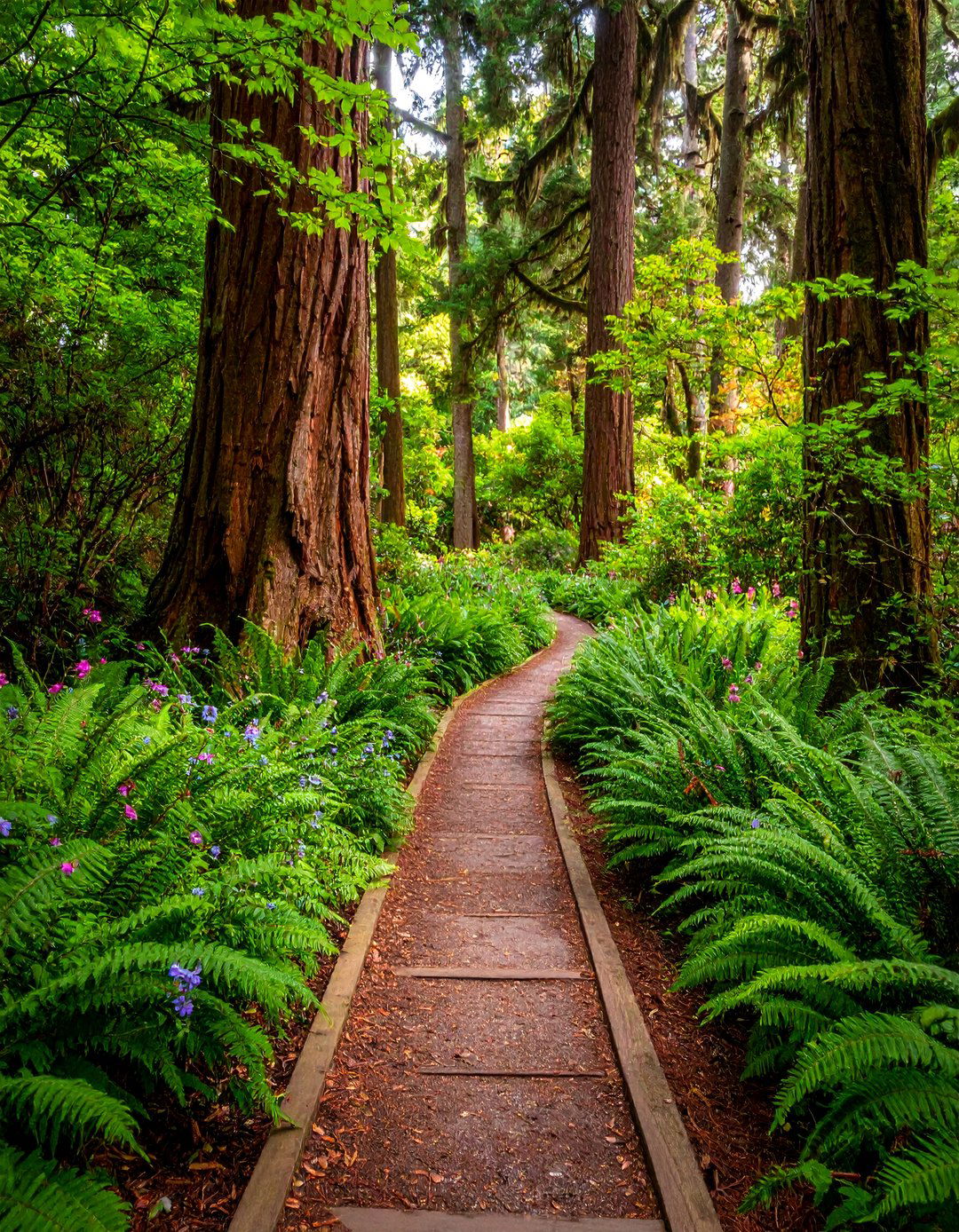
Hemlock bark mulch creates acidic pathways perfect for fern gardens while providing natural forest-floor aesthetics that support shade-loving plant communities. This specialized design employs hemlock bark that naturally acidifies soil while providing excellent moisture retention and organic matter. Diverse fern plantings along pathway edges create lush, green carpets that thrive in the acidic conditions hemlock bark provides. The bark material maintains attractive reddish-brown coloration while slowly decomposing to improve soil structure. This approach works beautifully in shaded gardens, woodland settings, and areas where natural forest aesthetics combine with practical pathway needs while supporting specialized plant communities that prefer acidic growing conditions.
21. Pea Gravel and Mulch Combination Pathway Design

Alternating sections of pea gravel and organic mulch create textural variety while providing different walking experiences throughout garden pathway journeys. This dynamic design combines well-draining gravel sections for wet weather navigation with softer mulch areas for comfortable barefoot walking. The contrasting materials create visual rhythm while serving different functional purposes throughout pathway length. Strategic placement of gravel sections near garden entrances or high-traffic areas maximizes durability while mulch sections provide comfort in relaxation zones. This approach works well in transitional garden areas, multi-use landscapes, and spaces where pathway functionality must accommodate different activities while maintaining visual interest through material variation and thoughtful design placement.
22. Sawdust Pathway with Wooden Plank Stepping Sections
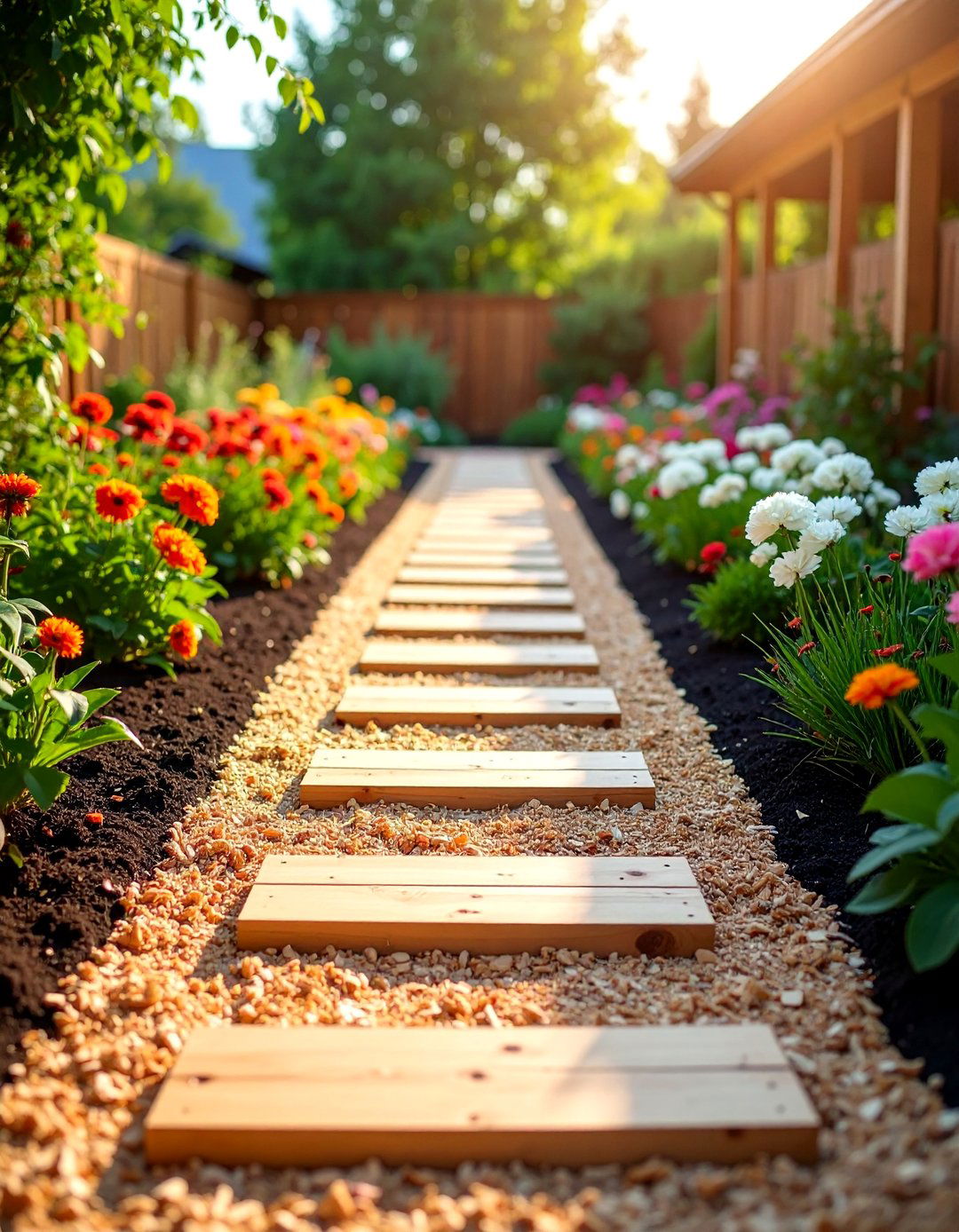
Fine sawdust creates smooth, compact pathways enhanced by wooden plank sections that provide stable footing while adding rustic charm to garden walkways. This practical design employs kiln-dried sawdust that compacts well while providing excellent drainage and natural pest deterrent properties. Pressure-treated wooden planks or recycled lumber sections create stable footing areas spaced throughout the pathway length. The sawdust material requires periodic replacement but significantly improves soil structure while the wooden elements add visual interest and practical functionality. This combination works well in workshop gardens, utility areas, and rustic landscape settings where practical functionality combines with natural aesthetics while utilizing readily available materials.
23. Autumn Leaf Mulch Pathway with Seasonal Decoration Integration

Collected autumn leaves create seasonal pathways that celebrate natural cycles while providing temporary walking surfaces that enrich garden soil as they decompose. This ephemeral design employs raked and collected deciduous leaves that create colorful seasonal pathways through fall and winter months. Seasonal decorations like pumpkins, gourds, or harvest displays integrate naturally with leaf pathways while celebrating autumn abundance. The leaf material provides excellent insulation for plant roots while gradually decomposing to improve soil fertility. Spring pathway renewal coincides with garden cleanup activities, making this approach both practical and environmentally beneficial. This design works particularly well in naturalistic gardens, seasonal display areas, and landscapes where celebrating natural cycles enhances garden enjoyment.
24. Ground Rubber Pathway with Creative Pattern Applications

Finely ground rubber mulch enables creative pattern applications that transform functional pathways into artistic landscape features while providing durable, weather-resistant walking surfaces. This innovative design uses colored ground rubber in geometric patterns, flowing curves, or representational designs that add visual impact to garden spaces. The rubber material maintains pattern integrity year-round while providing excellent drainage and cushioning properties. Installation requires careful planning and sectioning to achieve desired pattern effects while maintaining pathway functionality. This approach works excellently in modern gardens, artistic landscapes, and areas where creative expression combines with practical pathway needs while supporting environmental sustainability through recycled tire usage and long-term material durability.
25. Mixed Organic Mulch Pathway with Edible Border Gardens

Diverse organic mulch materials create varied pathway textures while edible border plantings provide fresh produce alongside beautiful walking experiences through productive garden spaces. This comprehensive design combines different mulch types in sections or random distribution while food plants like lettuce, herbs, or compact vegetables form productive borders. The varied mulch materials provide different decomposition rates and soil benefits while edible plantings supply fresh ingredients for kitchen use. Seasonal planting rotations maintain productive borders while mulch refreshing supports continued soil improvement. This approach works perfectly in kitchen gardens, sustainable landscapes, and areas where beauty and productivity combine to create functional, environmentally beneficial garden pathway systems.
Conclusion:
Mulch pathways offer endless creative possibilities for enhancing garden spaces while providing practical, eco-friendly solutions for outdoor navigation. From simple wood chip trails to elaborate patterned designs, these versatile walkways adapt to any landscape style or budget requirement. The combination of natural materials, creative edging options, and companion plantings creates opportunities for personalized garden expression while supporting soil health and environmental sustainability. Whether choosing traditional organic mulches or innovative recycled materials, proper installation and maintenance ensure long-lasting beauty and functionality that enriches the entire garden experience.


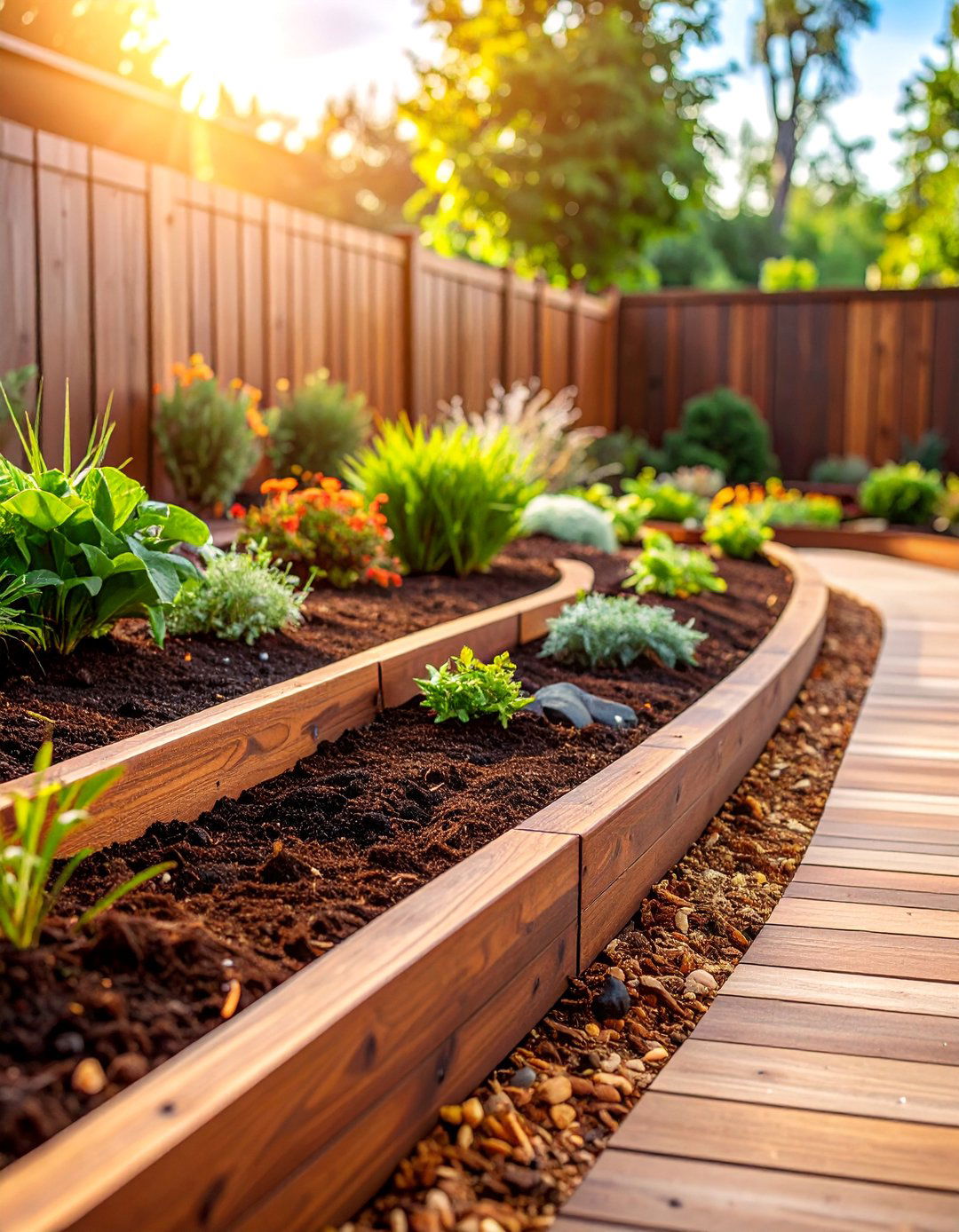
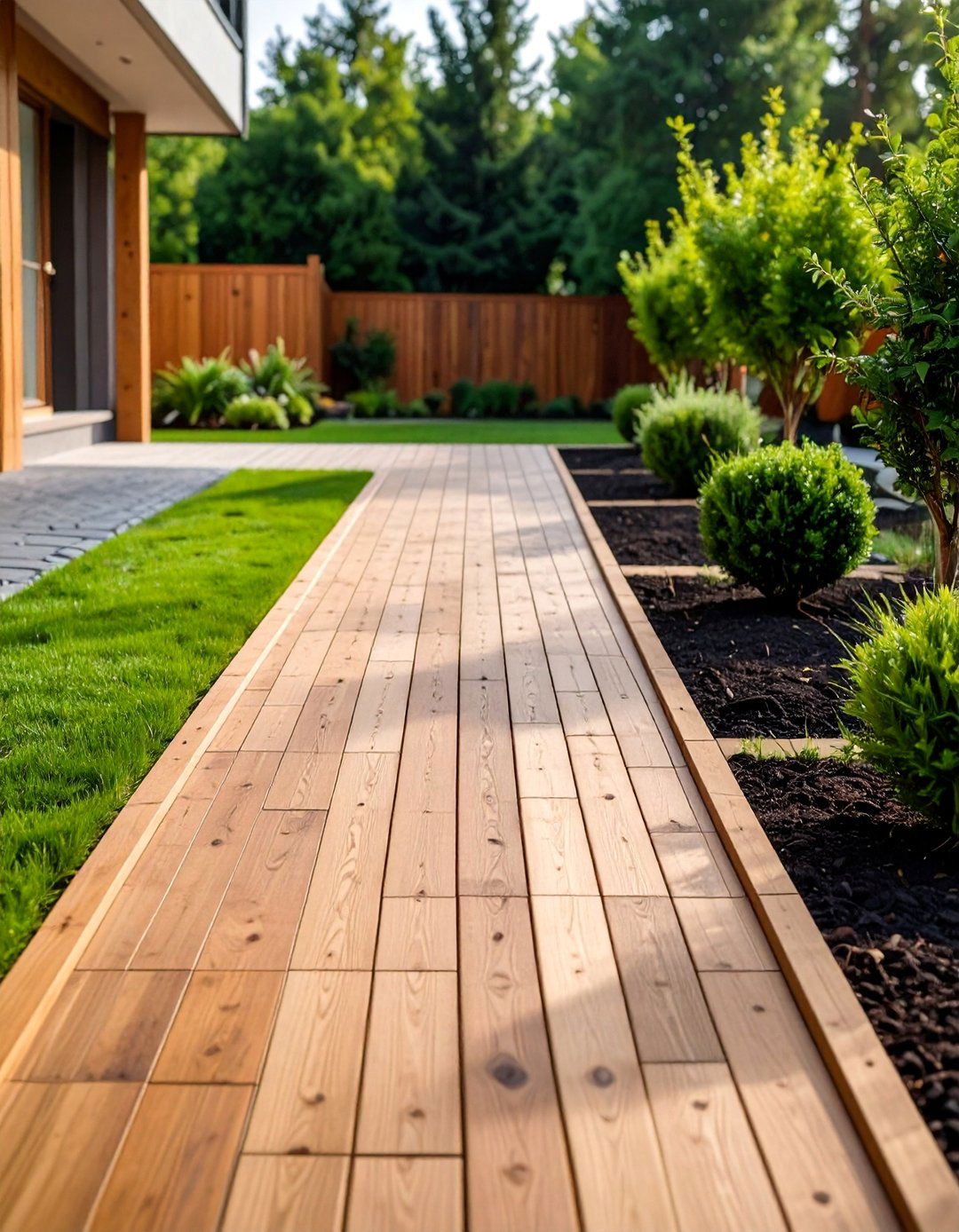
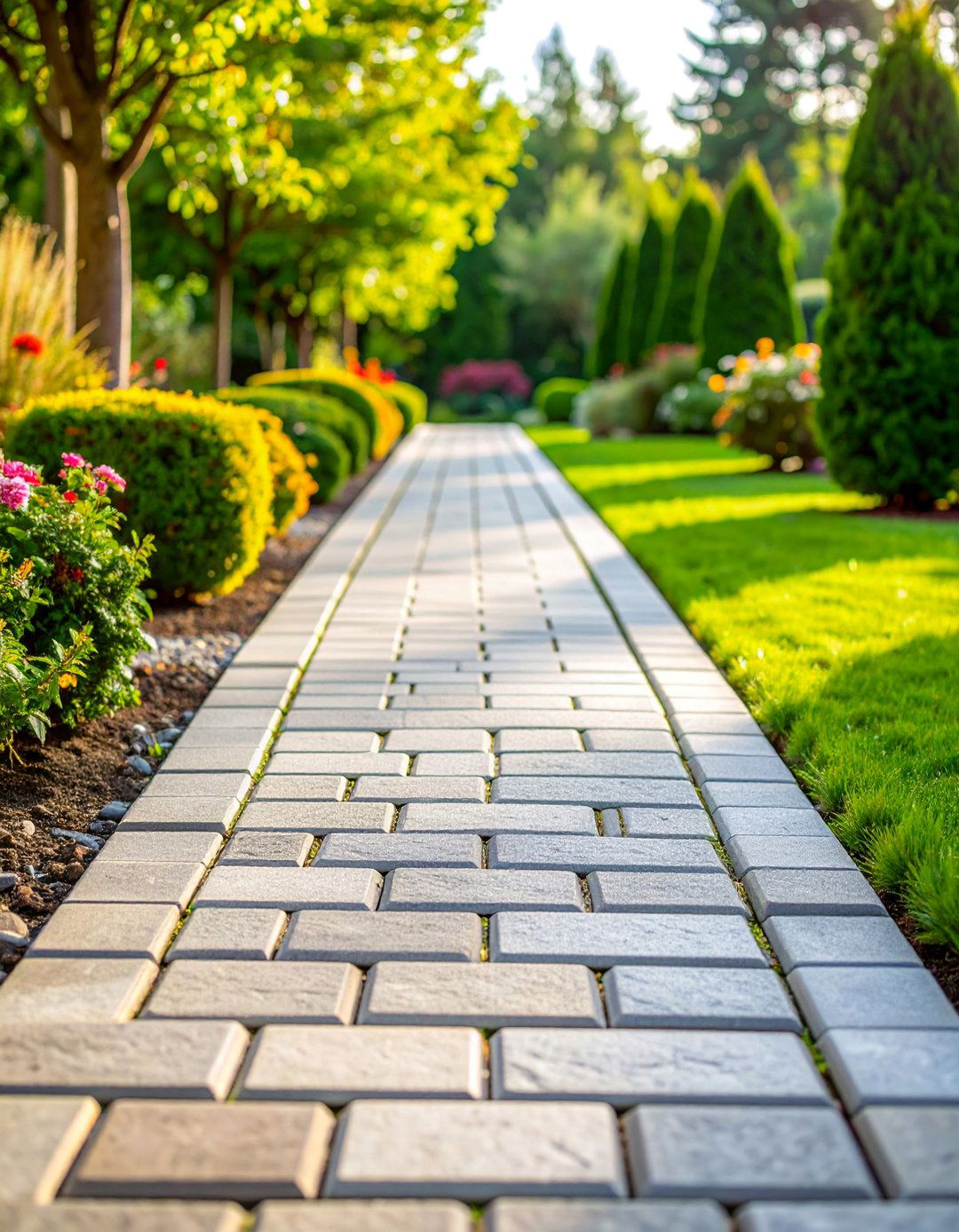



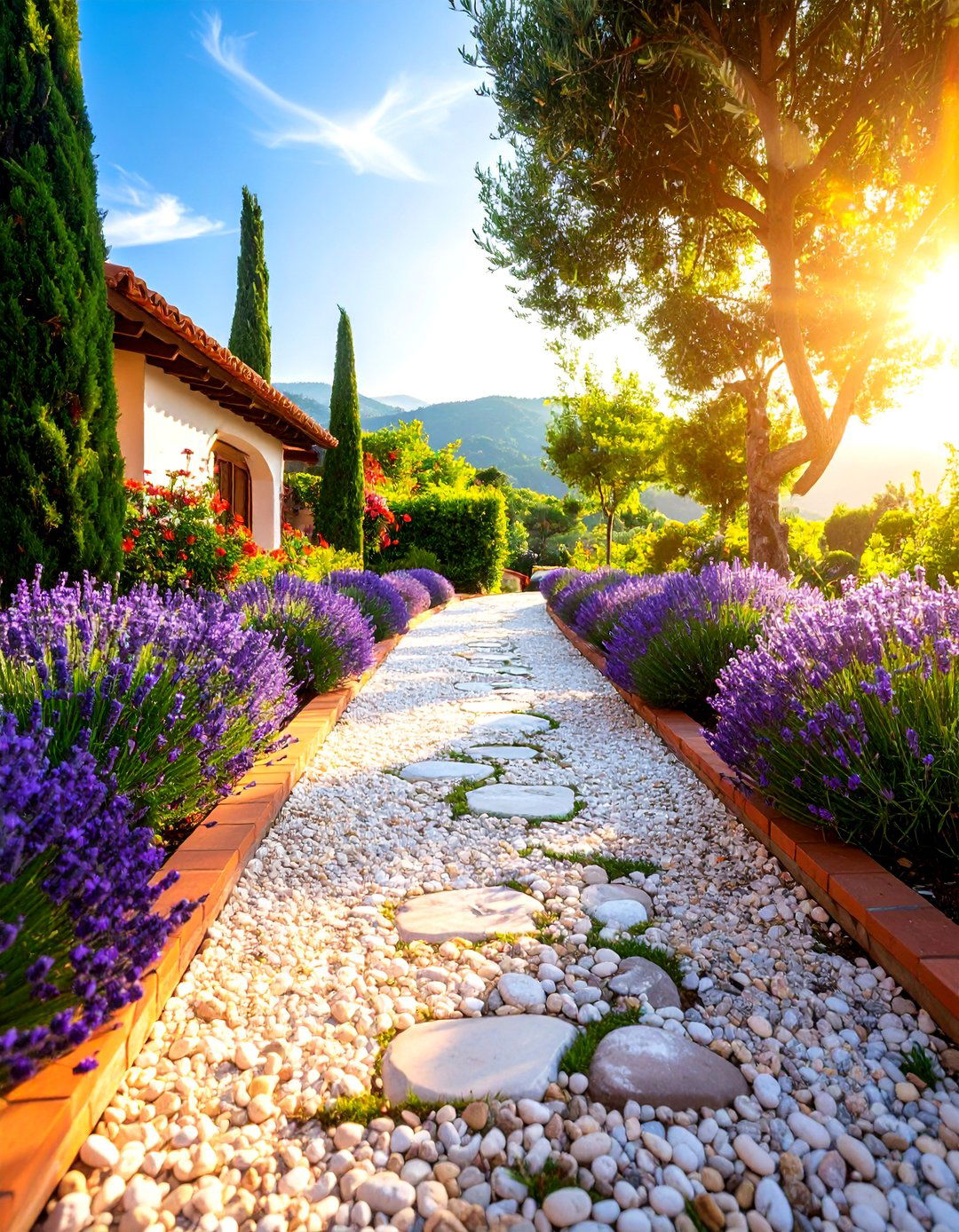

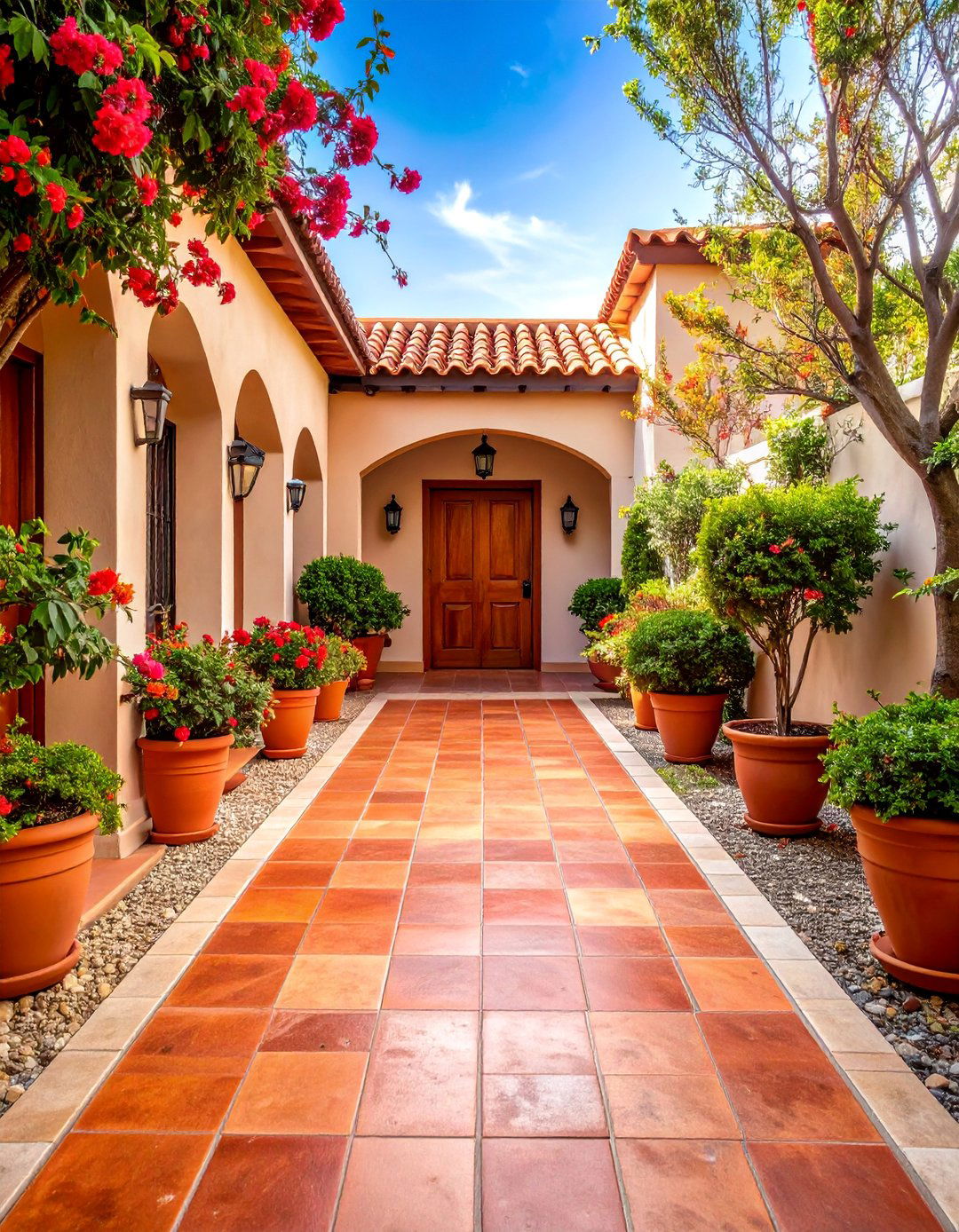
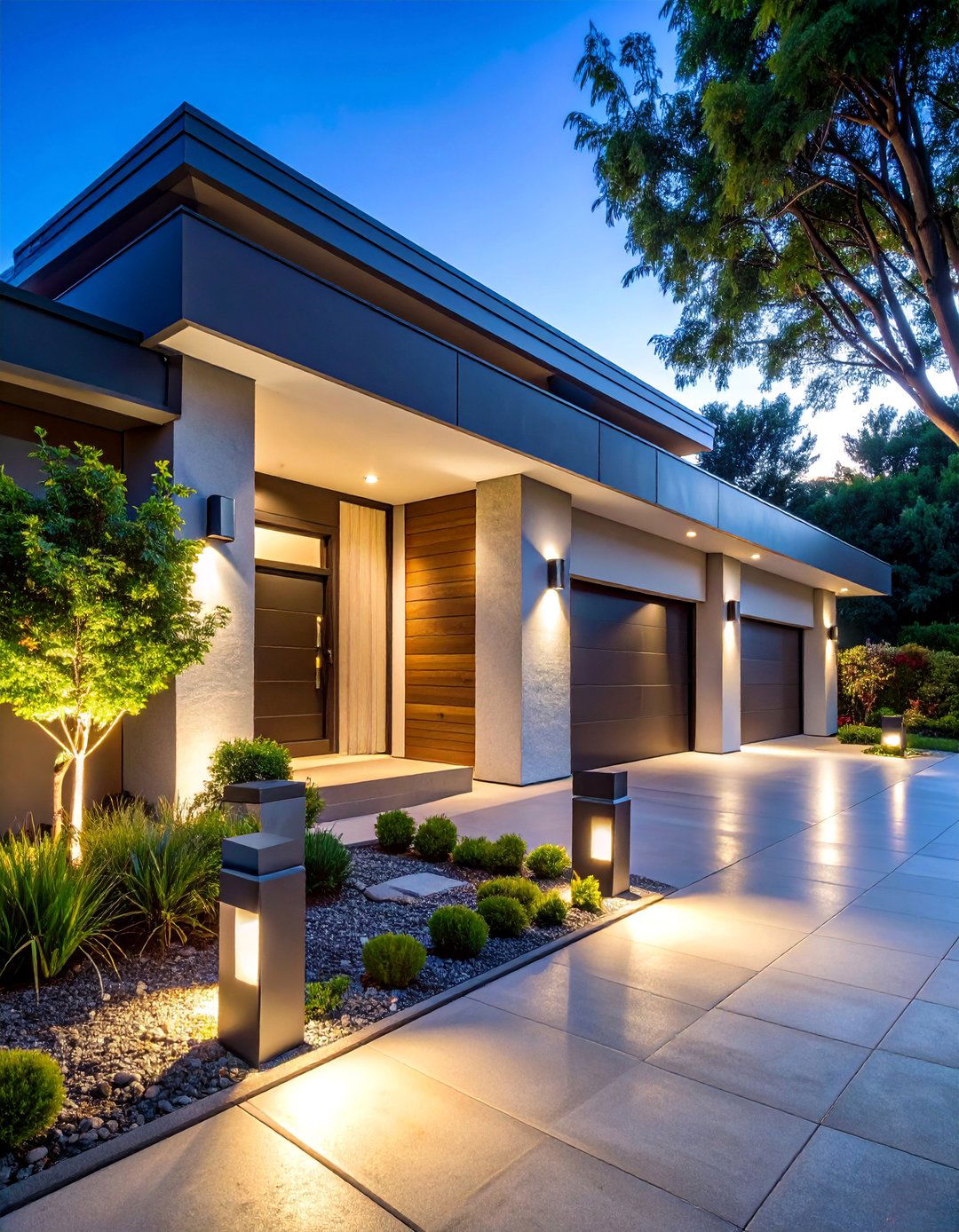


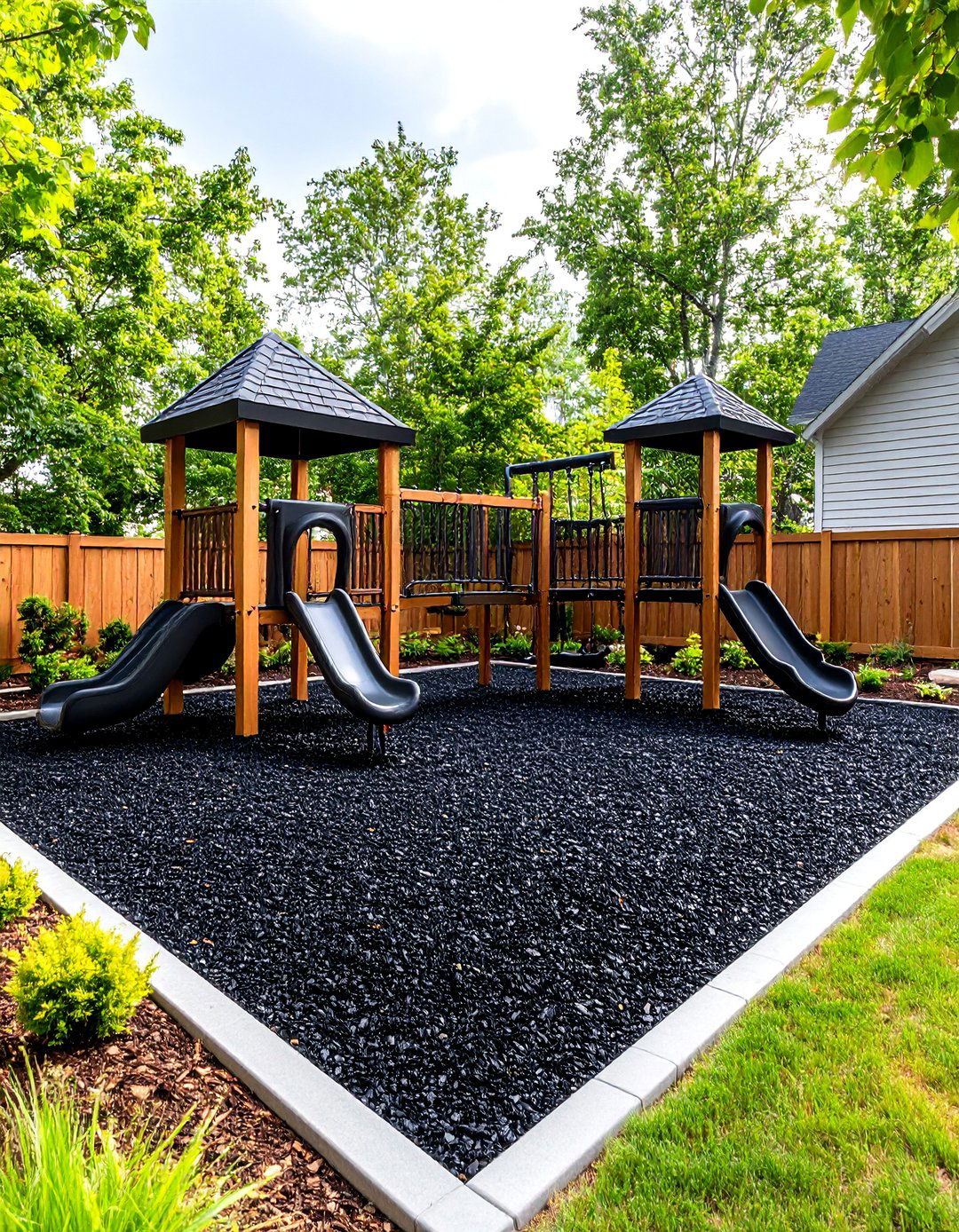

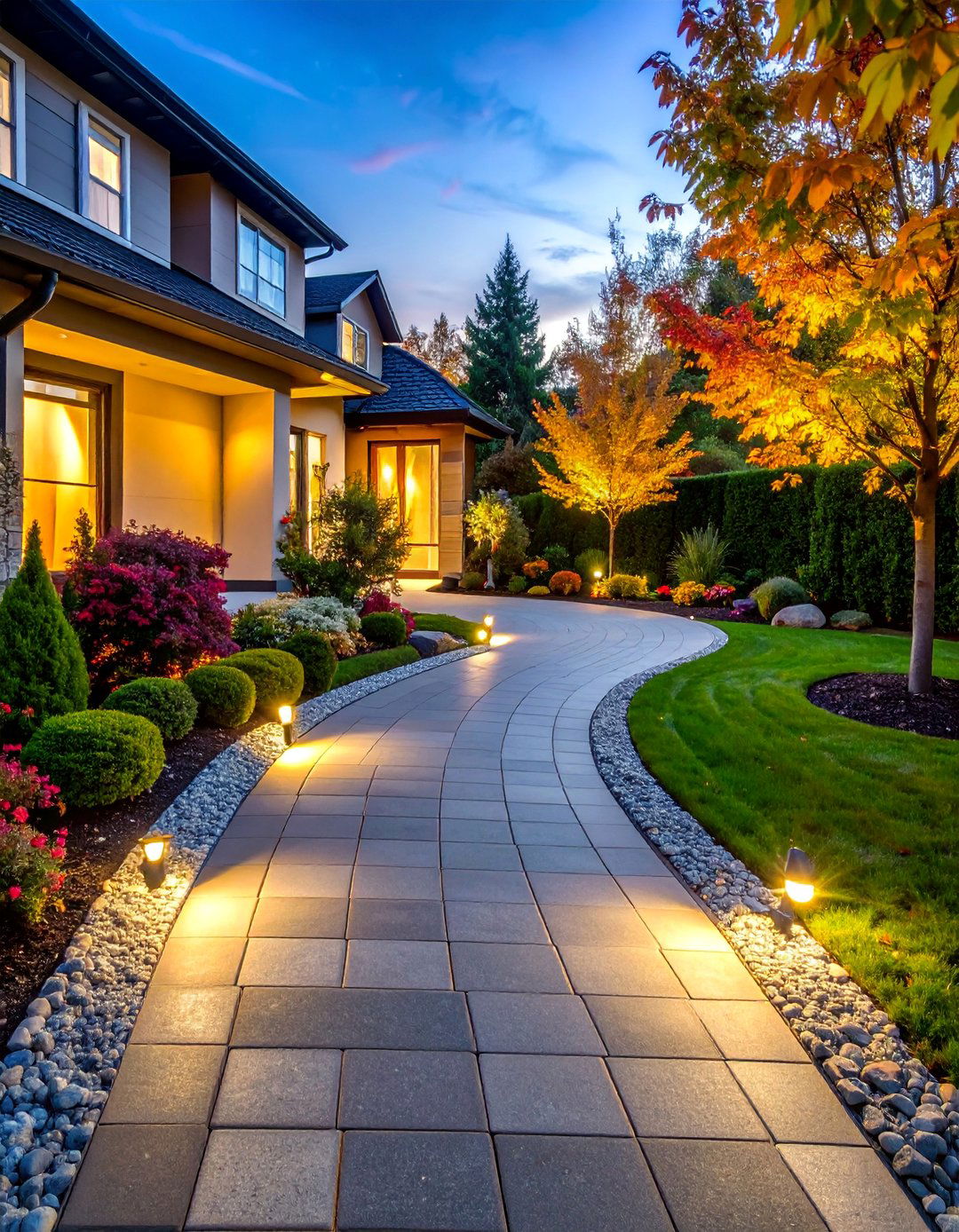
Leave a Reply